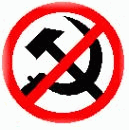Growth through mayhem
The communists have a plan to increase their presence in the quiet Himalayan state of Uttaranchal, the plan appears to be : instigate labour disputes and then intervene through strike and hartals. This beautiful state was shut down by the communists and the mainstream media simply failed to notice. Unlucky Uttaranchal appears to the laboratory where experiments aimed at expanding CPI(M)'s entry into the Hindi heartland will be conducted.
YOGI AND COMMIE STAR (The Telegraph, Jan 10, 2006)
Excerpt:
CPM held a conference on January 15 and 16 last year in Rishikesh, the point of entry to a string of holy towns, and the home of Indian Drugs and Pharmaceuticals, which a militant trade union had helped along into bankruptcy. CPM bussed in “students” from ten districts. Slowly, they crawled along Hardwar Road and Lakshman Jhula Road, shouting death to sundry oppressors. Then 108 delegates — 45 from the middle class, 38 from the peasantry, 12 from the working class, and five agricultural labourers — gathered together. Amongst those who spoke, Brinda Karat attacked the BJP for having passed the UP Reorganization Bill in 2000, which created Uttarakhand but discriminated against it, and the Congress for not having implemented the common minimum programme despite having been in power at the Centre for eight months. The “ruling class party” — read the Congress — was no different from the BJP. The solution? The people of Uttarakhand must vote CPM next time. Meanwhile, whenever the situation demanded, the CPM would support people’s struggles. It would become the champion of the regional aspirations of the working class and socially oppressed people. The local branch was set targets to raise membership to 15,000 workers, 15,000 women, 30,000 farm workers, 10,000 students and 15,000 other youth.
Then all was quiet till the end of winter. On April 18, CPM held its 18th congress in Delhi; there the strategy to be followed in Uttaranchal was honed. On May 5, workers in the ayurvedic pharmacy of the Divya Yog Mandir Trust in Hardwar, refused to take their salaries. Instead, they started shouting. On a cue, local CPM agitators came and joined them. Since they were not prepared to work, the workers were terminated. Others took their place; but no one has come forward yet to champion their cause.
The dismissed workers said the pharmacy used powdered human skulls and animal organs. Promptly Brinda Karat called for a high-level probe — and also that the pharmacy should be brought under the Factories Act, so that it could not dismiss workers. In June, she went to Hardwar and shouted slogans outside the ashram with her cohorts for a day. Acharya Balkrishan, who runs the pharmacy, invited her to go and visit it, but that did not suit her purpose.
Over the next three months, CPM activists went around eight districts and plotted the next move. On September 19, Brinda Karat arrived in Kathgodam, and proceeded up the hills. In Haldwani and Gair Sen she gave press conferences, in which she said the hill people had been discriminated against in every way. In Rudrapur, Almora, Gopeshwar and Rudraprayag she marched about with protestors shouting slogans. She took delegations with long lists of complaints to the district magistrates of Almora and Chamola.
In Dehra Dun and Hardwar, she repeated noisy obstructions. Then on September 29, the party struck all over Uttarakhand; suddenly, CPM brought the state to a halt by occupying highways and road junctions in Pauri, Hardwar, Rishikesh, Lansdowne, Kotdwara, Shaktinagar, Rudrapur, Sitaganj, Haldwani, Bageshwar and Almora. That was a busy day, a successful day, an inspiring day for party leaders; they were ecstatic that they had disrupted the lives of so many.
Although Brinda Karat went repeatedly to Uttaranchal and raised mayhem, hardly anyone outside the state noticed. I certainly did not know about it.


0 Comments:
Post a Comment
<< Home